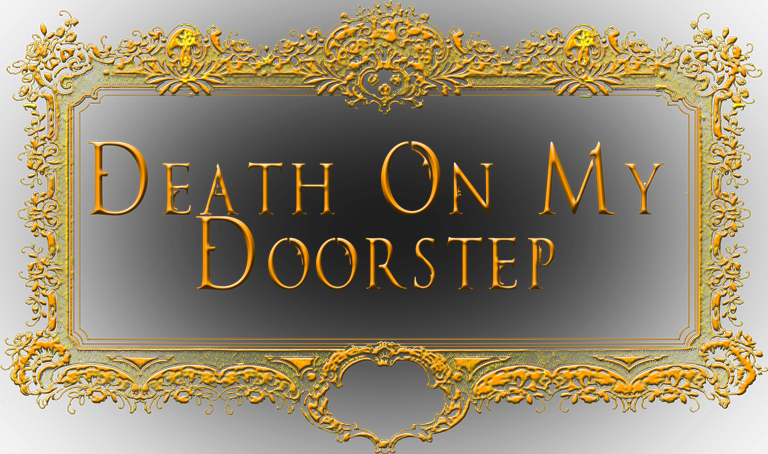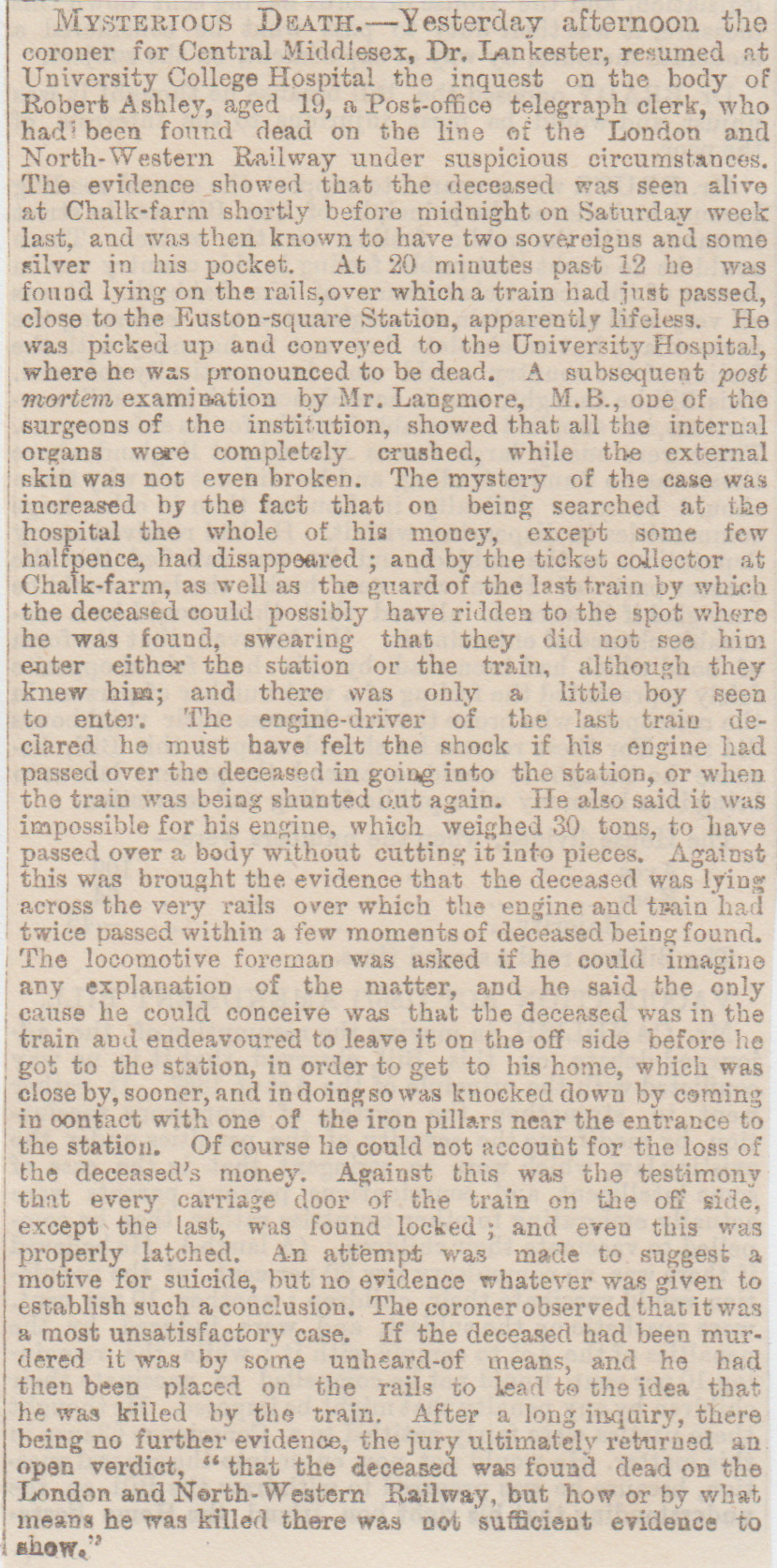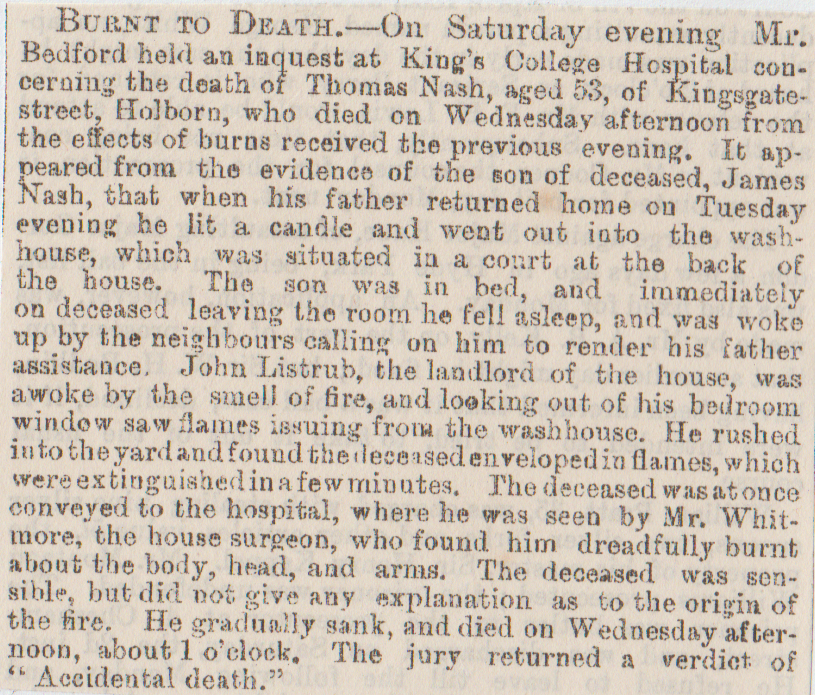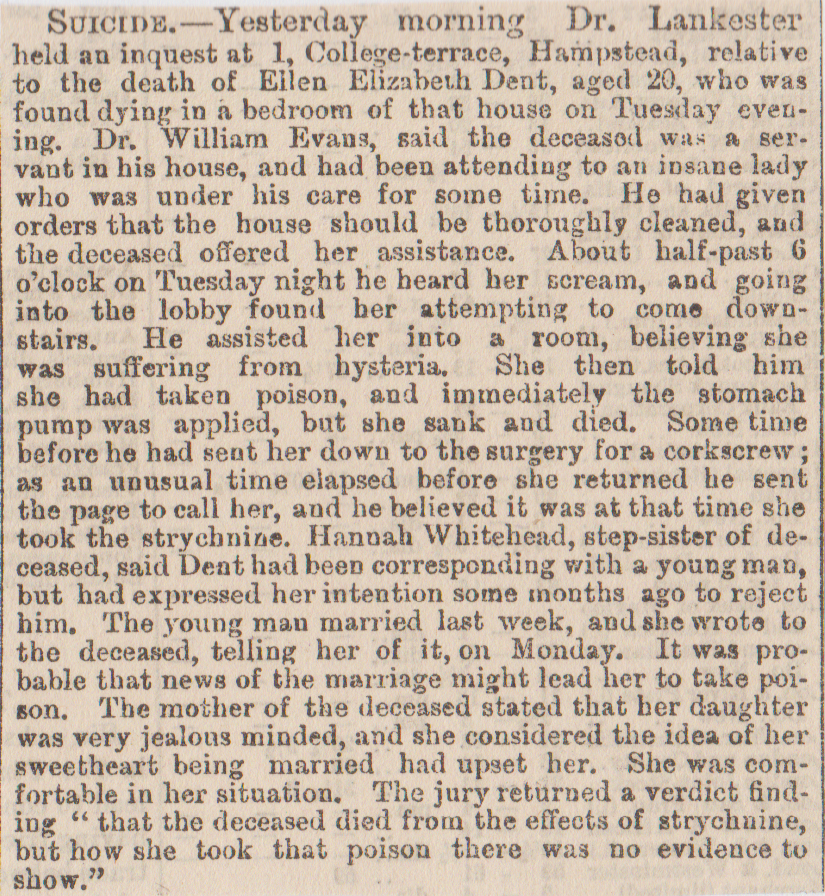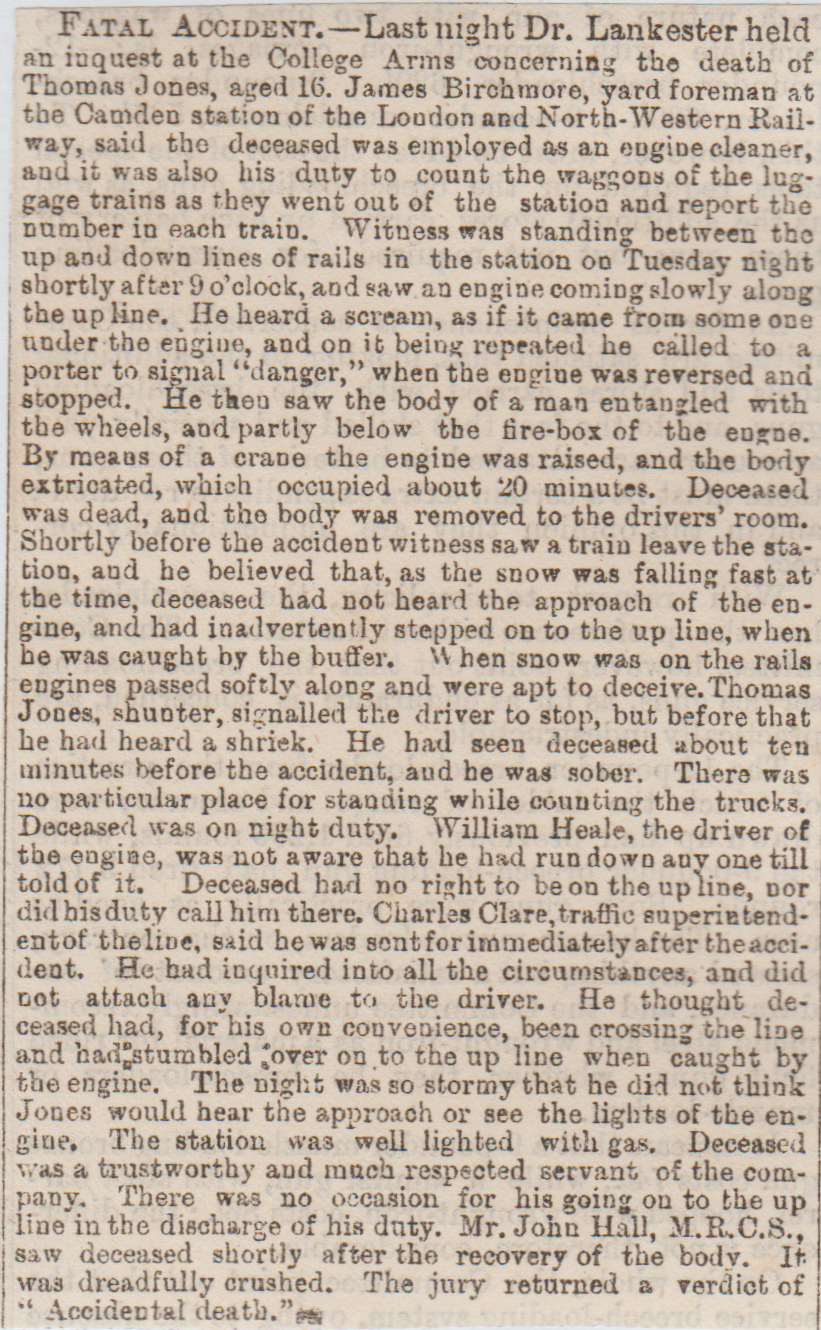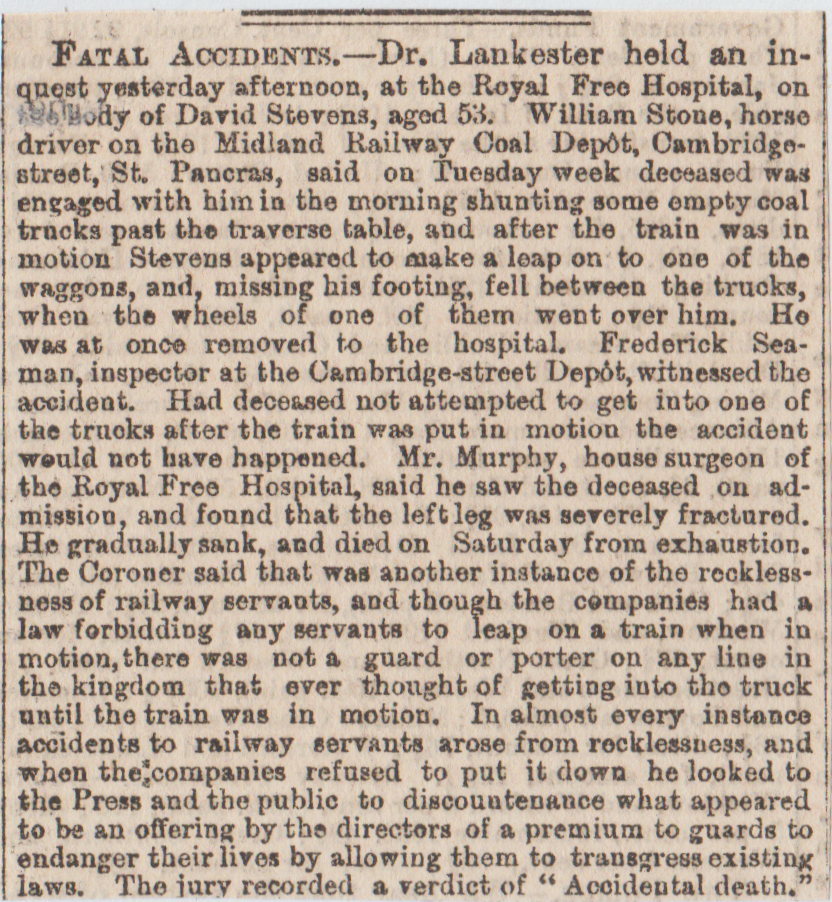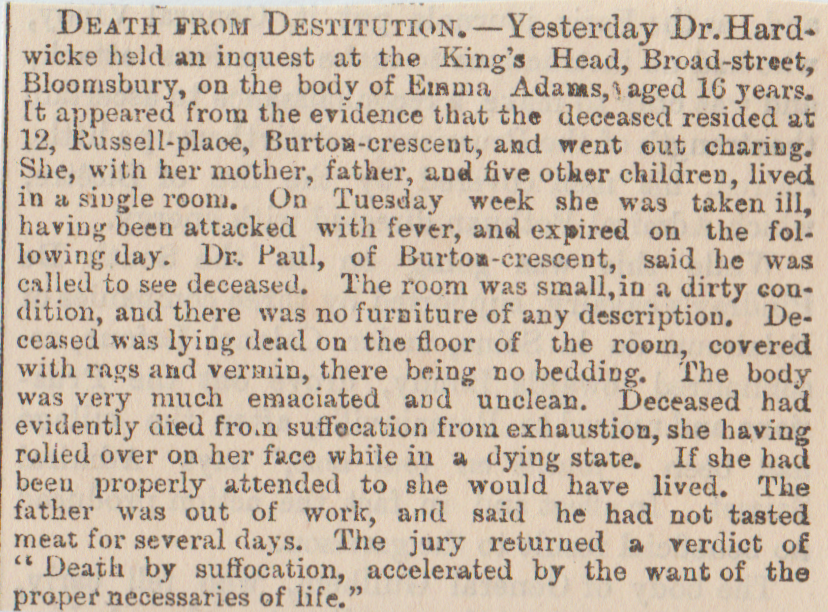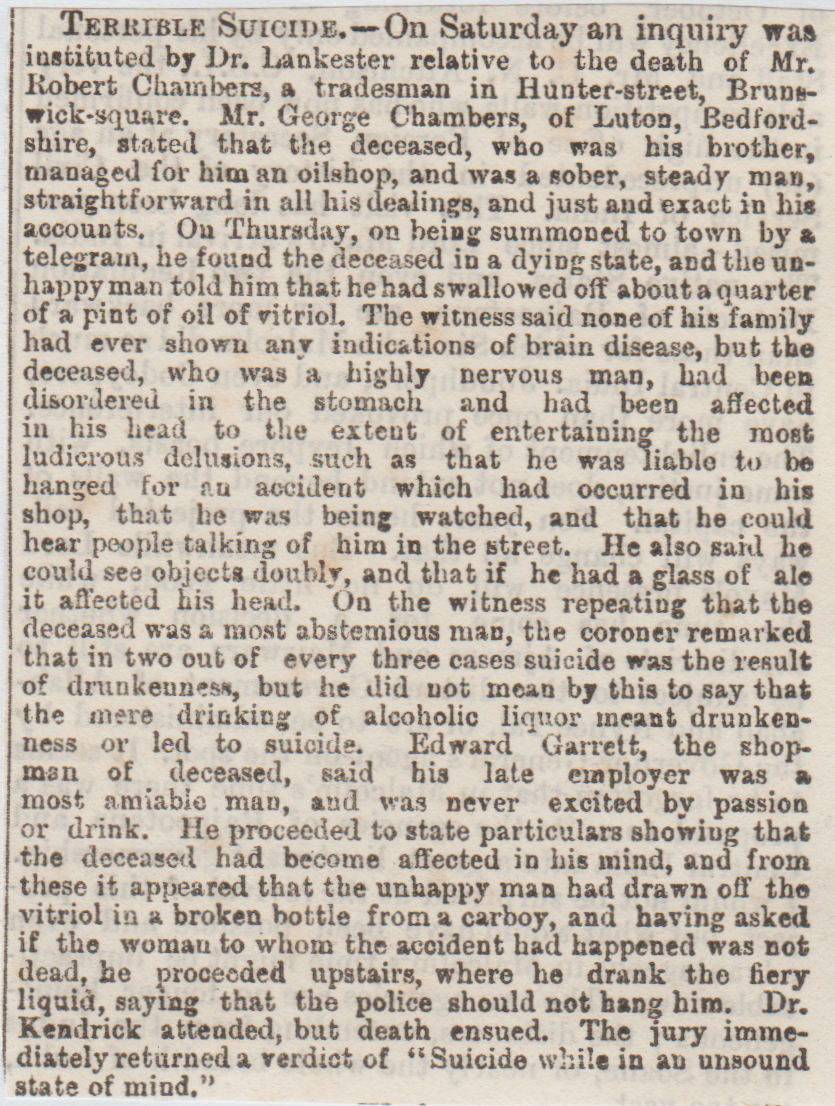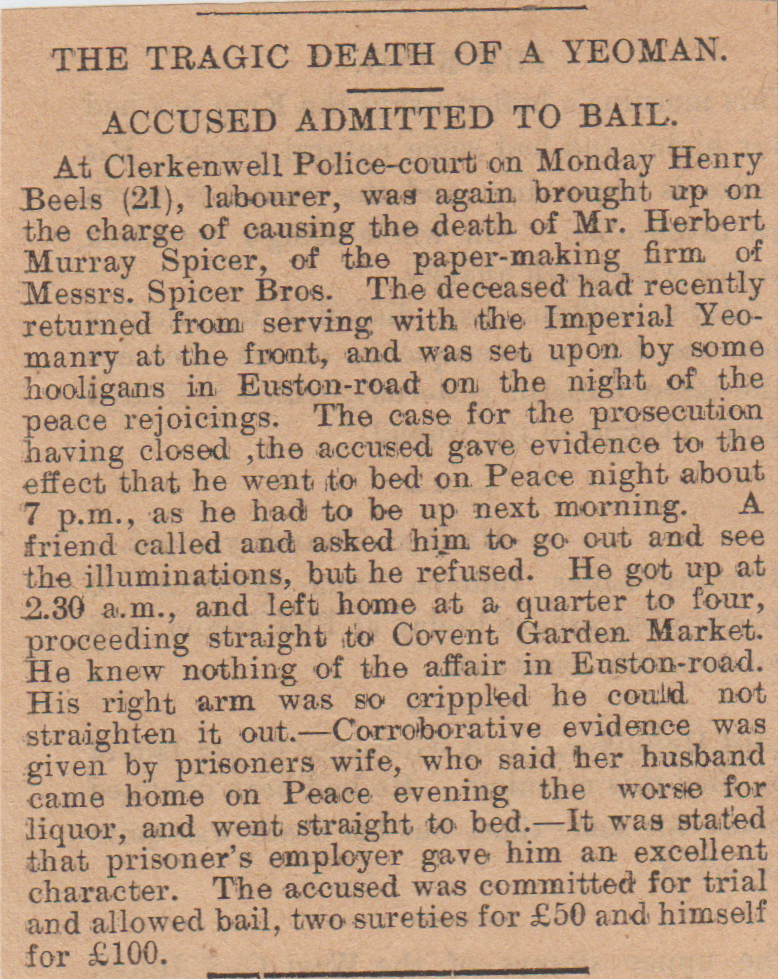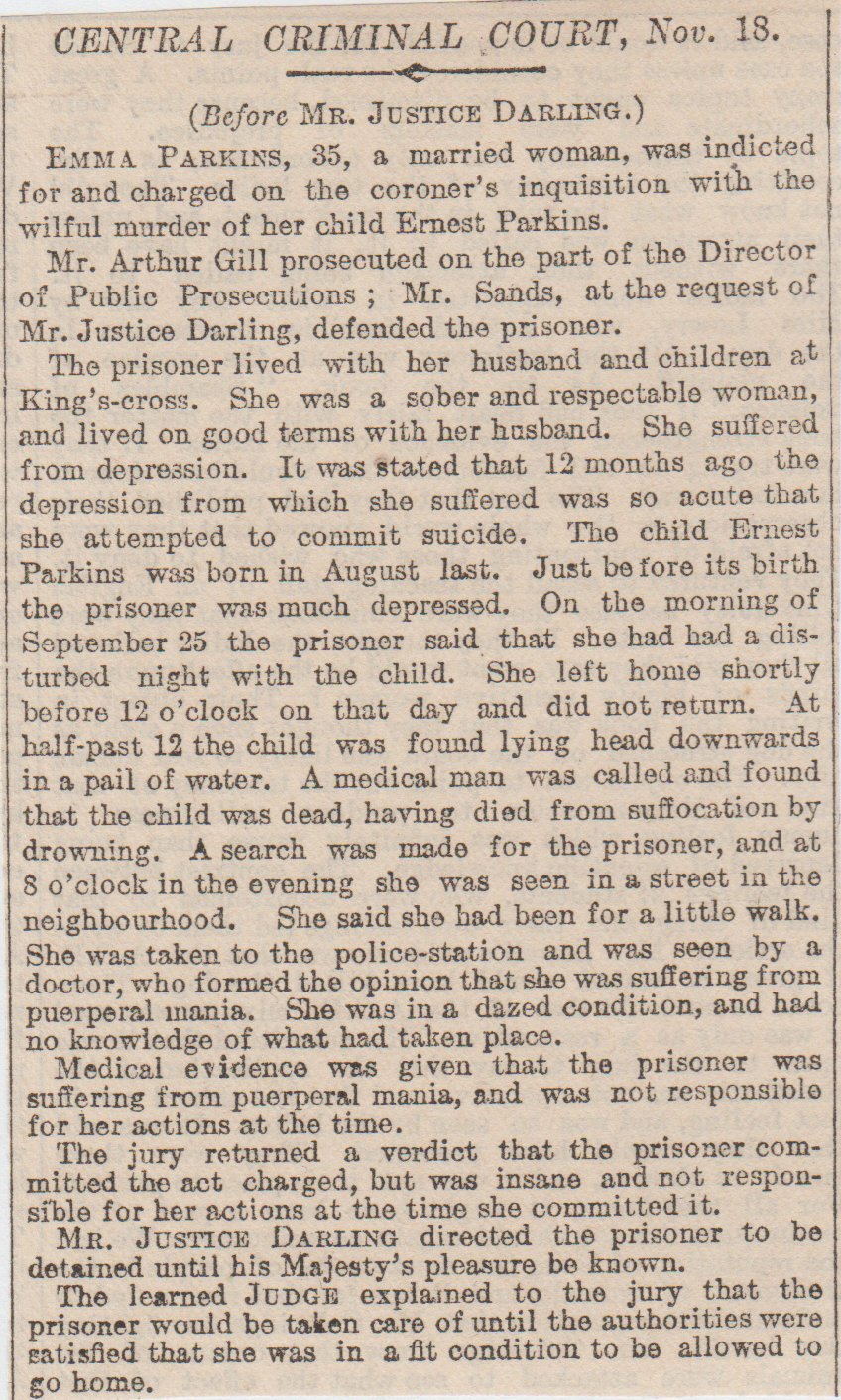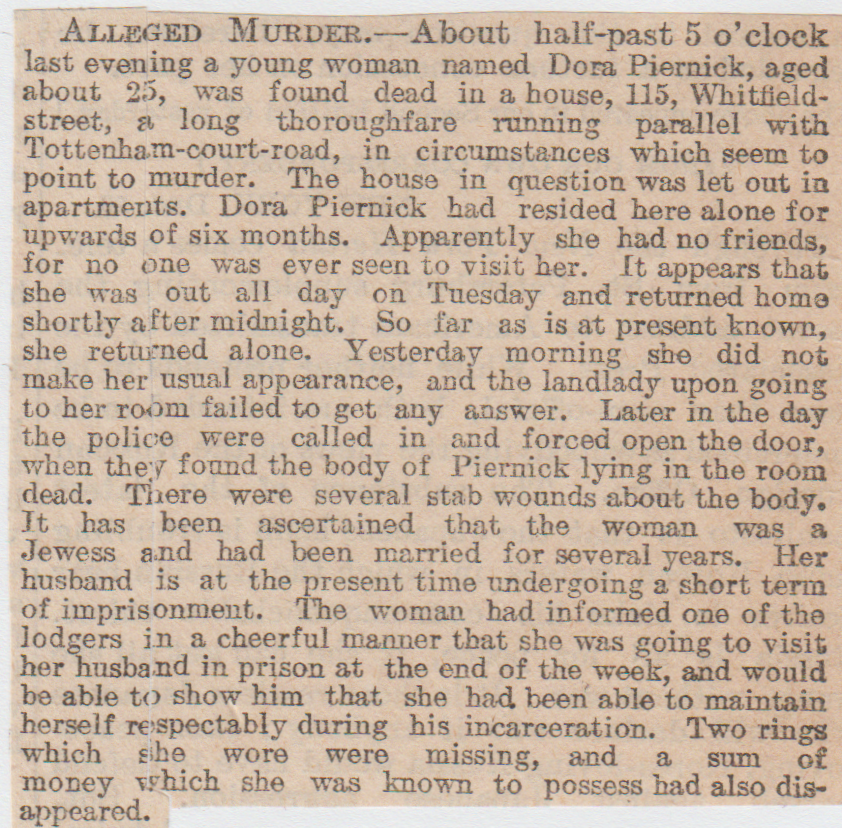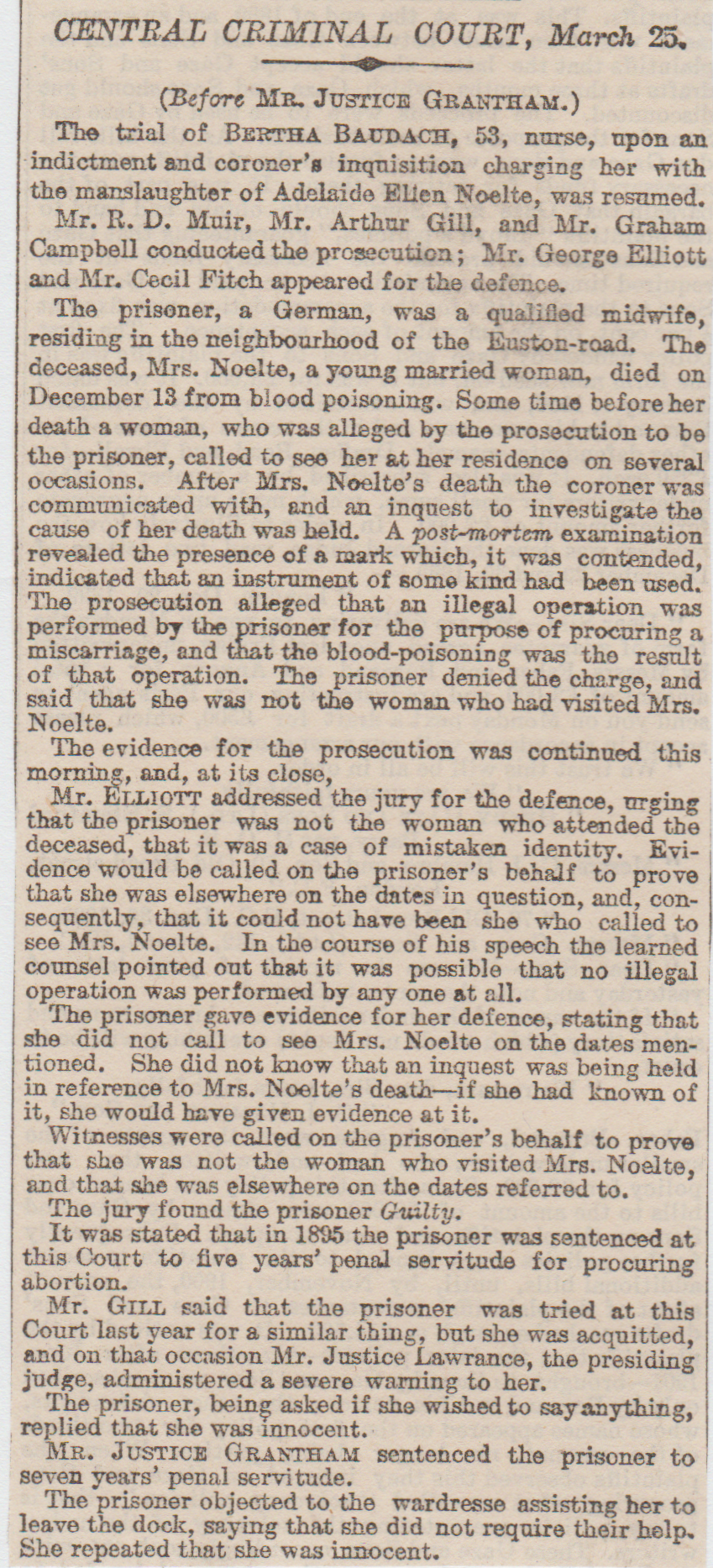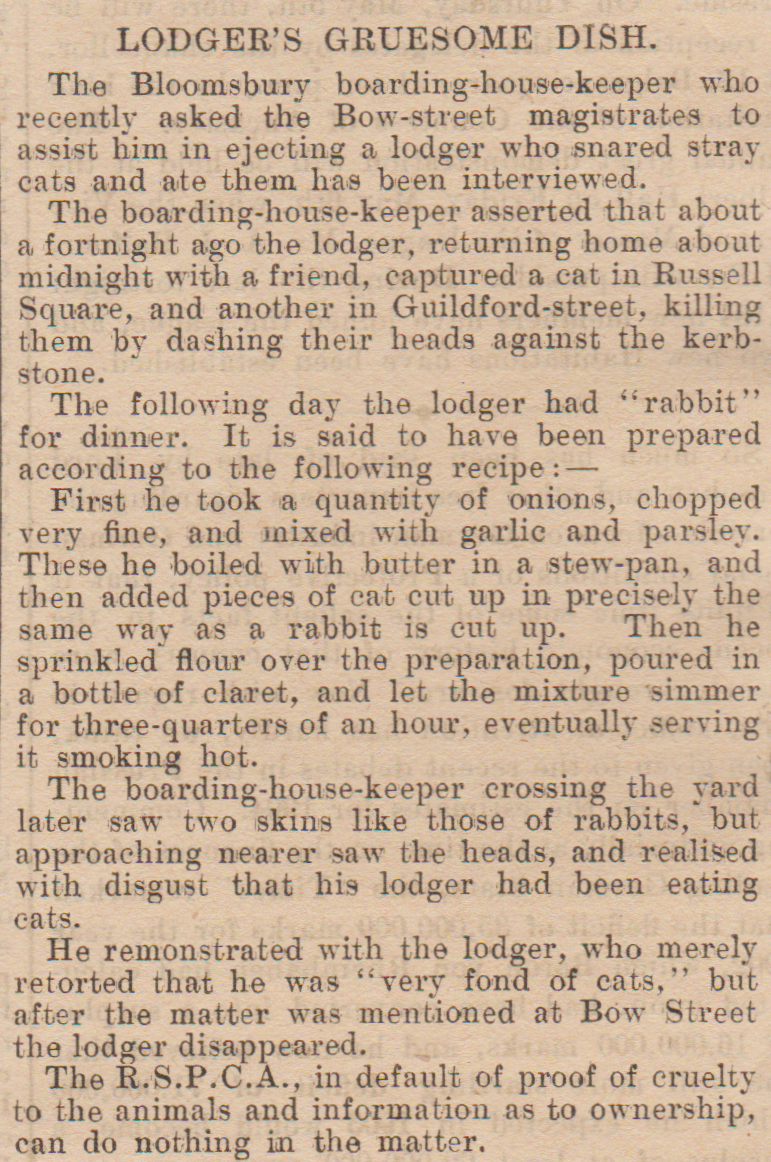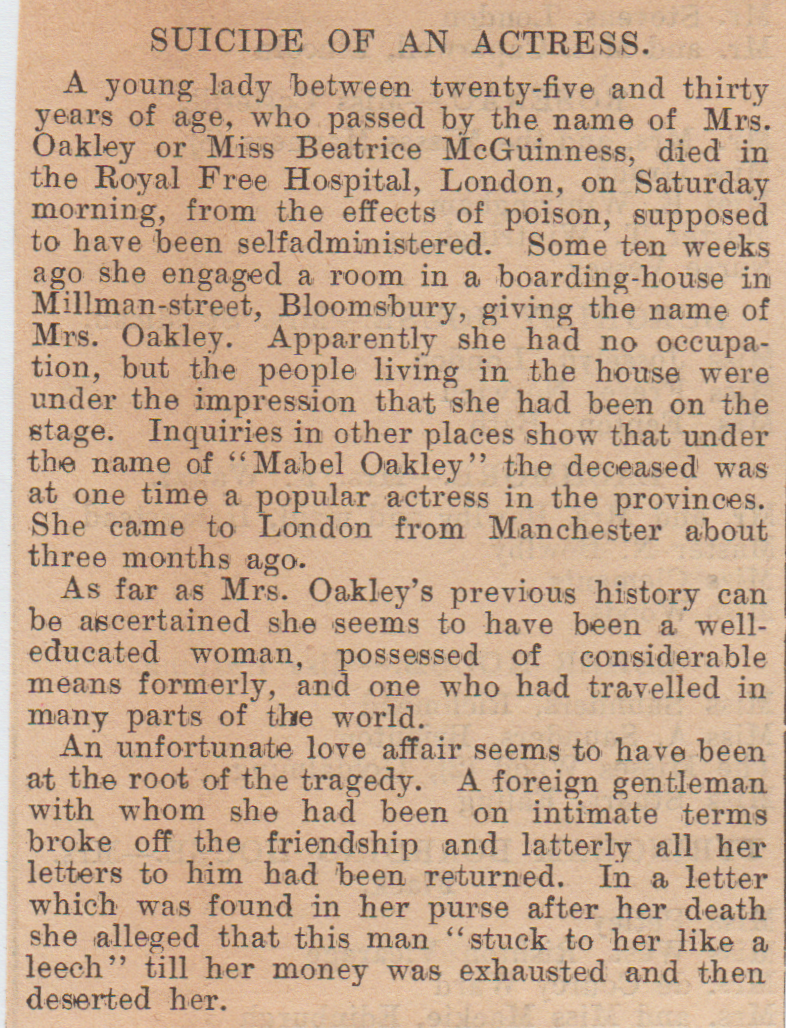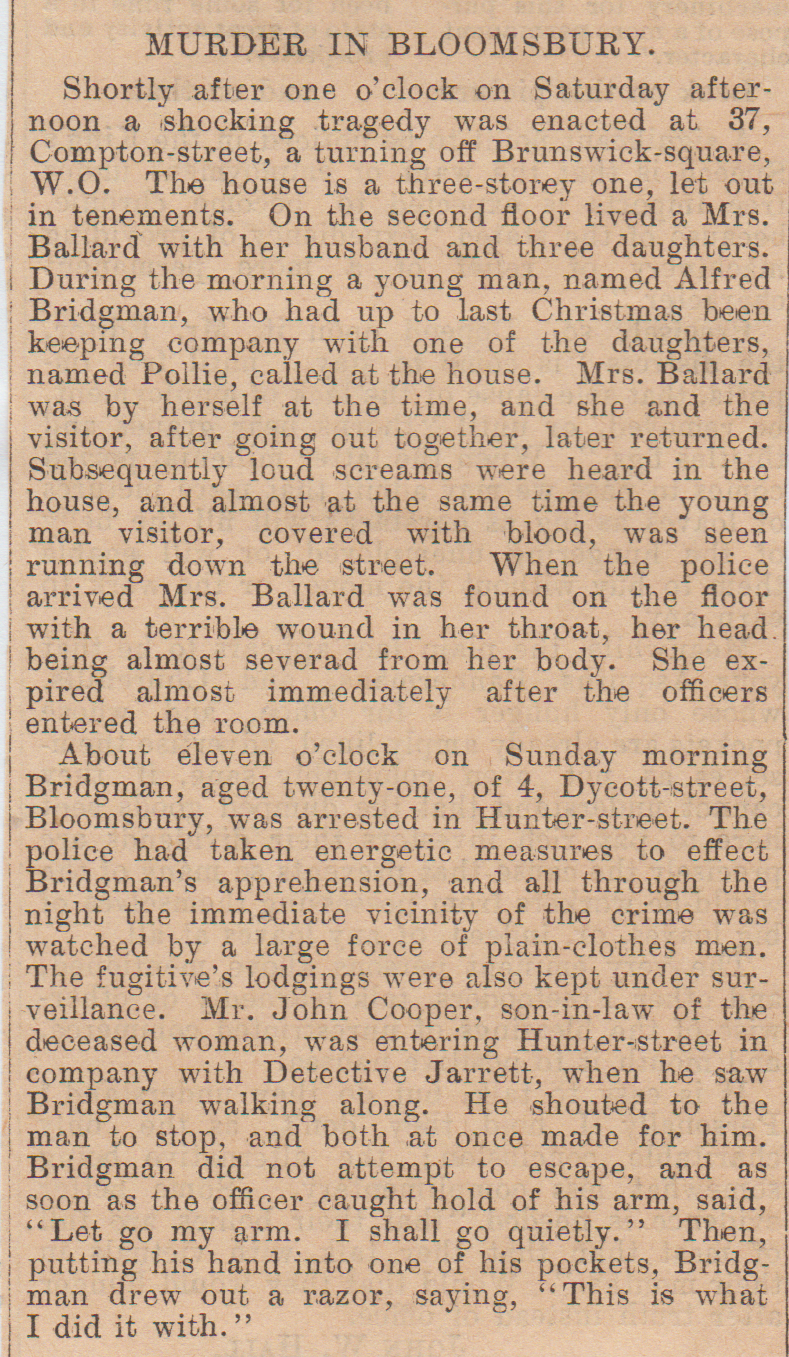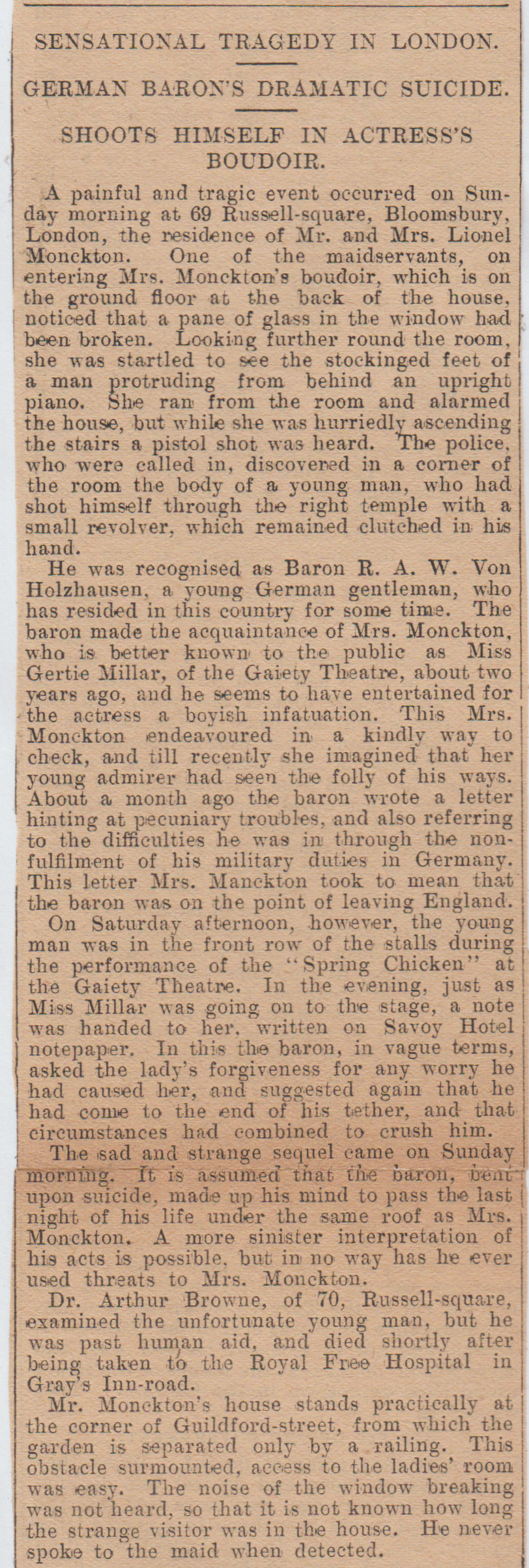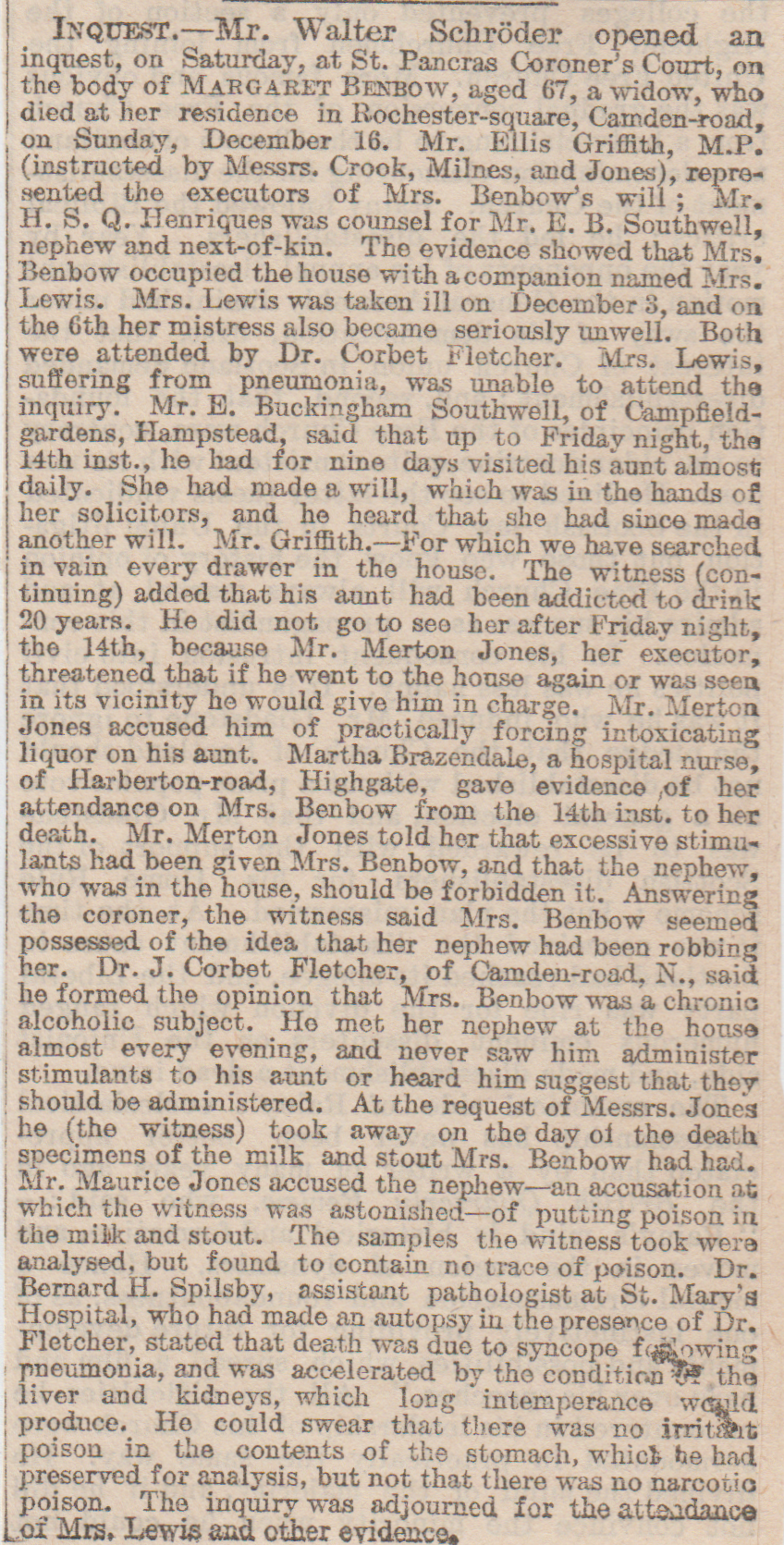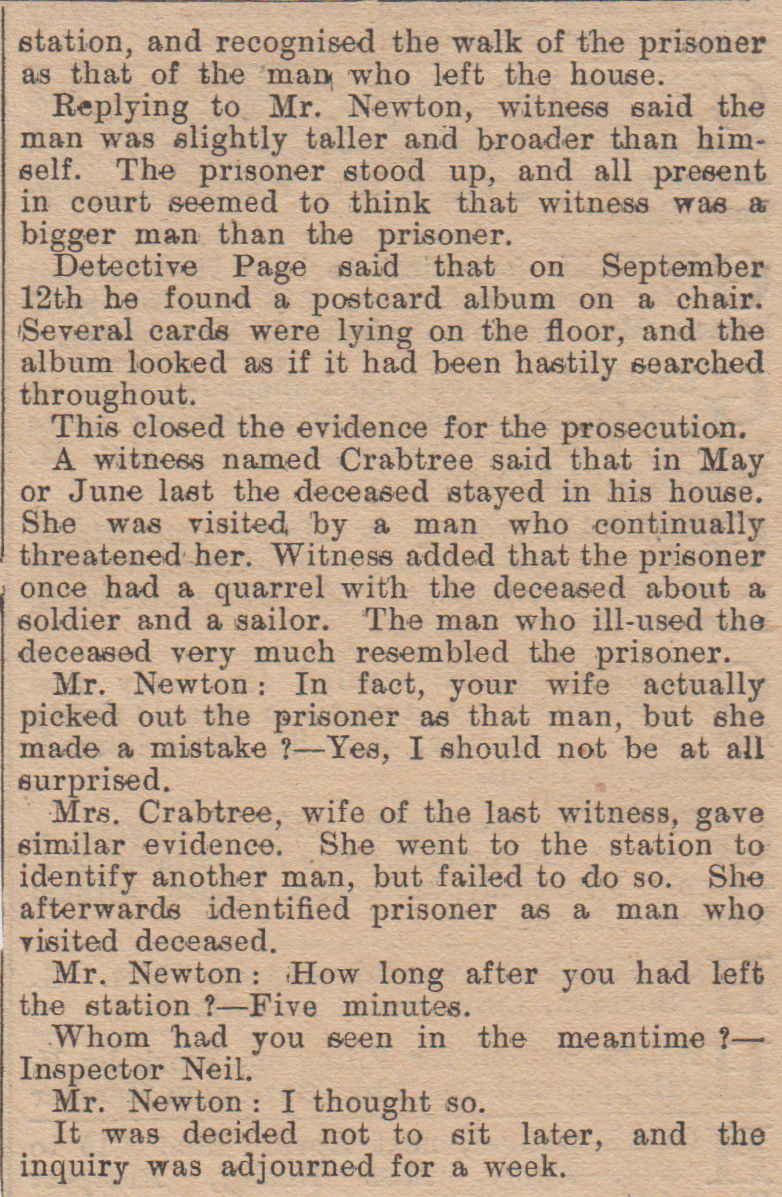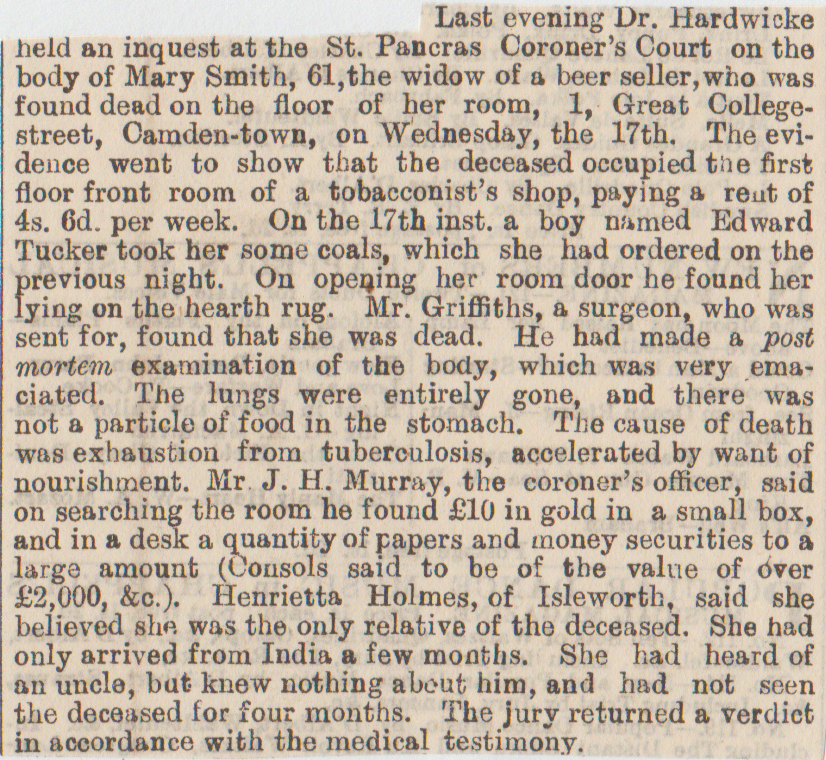1/ Tottenham Court Road Murder, March 1899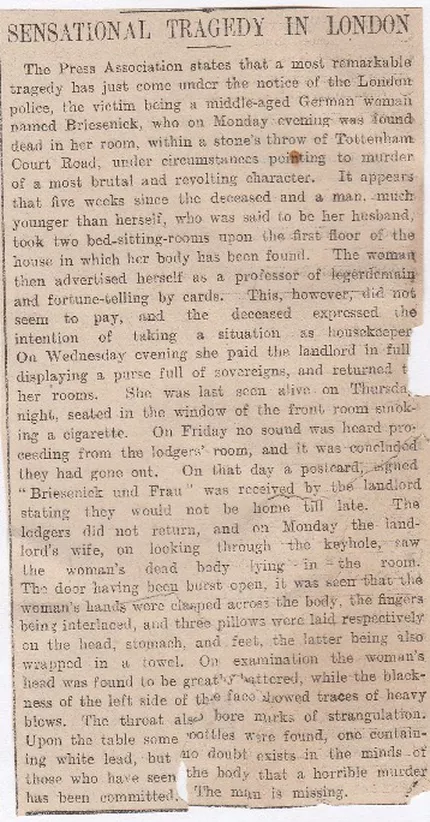
2/ British Museum Suicide, February 1896

Sat quietly in the Reading Room of the British Museum was a middle-aged gentleman. He sat there at a desk when all of a sudden he gets a razor from his pocket and slits his own throat. Police were called for and he was taken to Middlesex Hospital, but his razor skills were too good. (Who was he?)
3/ Hampstead, Camden, April 1887 (Football Death)
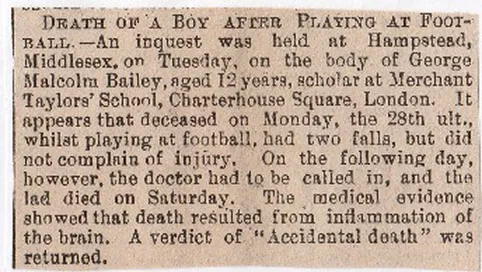
4/ Hotel Russell Suicide, Russell Square, April 1908
Emily Hoare, a 53-year-old woman killed herself while staying at the Hotel Russell in Russell Square. She was discovered at 2 a.m. lying in a crumpled heap on the first floor dressed only in her nightie. She had a broken neck plus other injuries. On the 7th floor, there was a chair next to the bannisters which suggest that she put it there then jumped over the railings, a drop of about 80 feet.- The verdict- “Suicide while of unsound mind”.
5/ Rochester Mews Beheading, Camden Town, April 1894
Three lads were taking a short-cut through Rochester Mews when they saw the grisly spectacle of a human male head lying in the gutter. They got the police to investigate and Kentish Town police are now trying to find the rest of the body. The male is about 30-40 years old, black moustache, black curly hair, and the decapitation were performed very recently. He seems to be a foreigner and the beheading appears to have been hacked at with a blunt instrument, possibly pen-knife.
6/ Whitfield Street Murder, March 1899
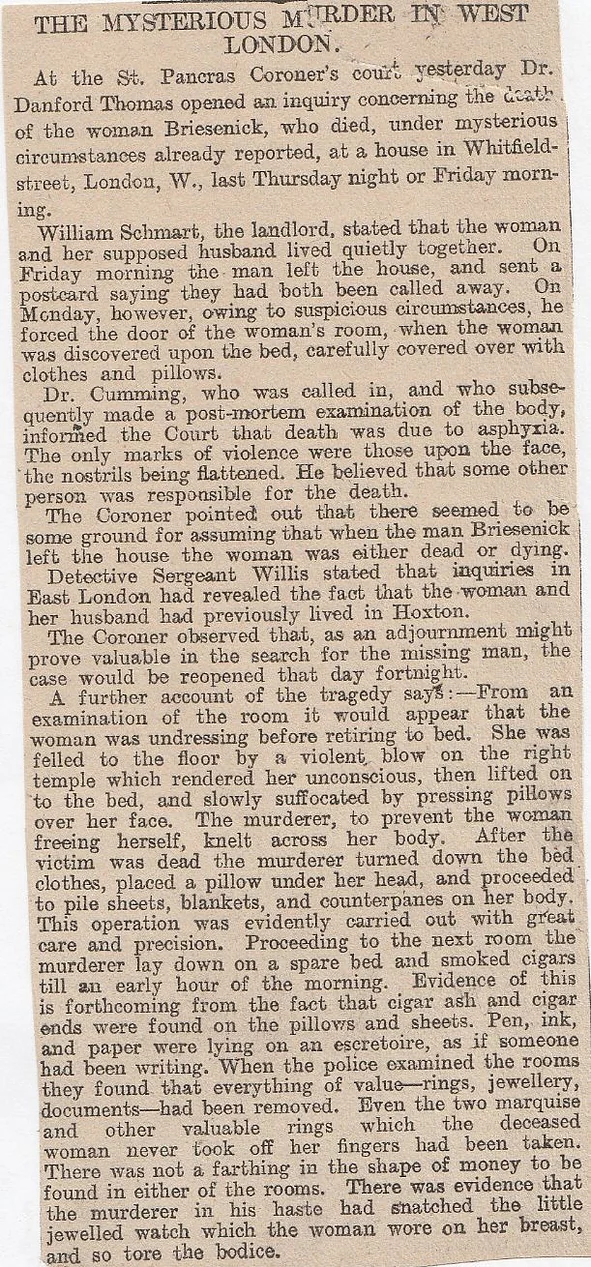
7/ Bloomsbury, June 1848 (Suicide from Gambling Debt)
Mr Bishop, a wheelwright from Bury Street, Bloomsbury, slit his throat and killed himself. The previous day he had hired a couple of carriages to head off to the horse-racing. While at the races he lost a considerable amount of money, way more than he could afford. Between five and six in the morning he got up to take the key to the workman, and after that, he must have committed suicide.
8/ Hampstead Station Suicide (Camden?) March 1882
An inquest was held at Hampstead on the body of Augustus Bull, the 23-year-old footman to Dr Cooper Rose. He was engaged to a young woman, but she didn’t want to rush things and told him that she would be “happy to regard him as a friend”. To Bull that was a massive kick in the gonads, and his manhood was deflated, so he went down to Hampstead Station on the North-Western Line and dived in front of an oncoming express.
9/ Royal Park Hall Death, Camden Town, February 1888
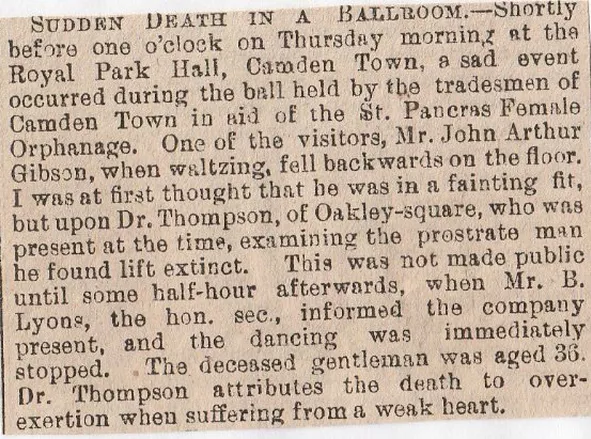
10/ Hampstead Cemetery Suicide, December 1892
Edward Cornelius Scanes was a 44-year-old husband who was so devoted to his first missus that he killed himself on her grave at Hampstead Cemetery. He had been ill recently, so he decided to go to her plot and shoot himself in the chest. His head rested on the grave next to hers, which was his father’s, so killed two birds with one stone, so to speak. (Still there?)
11/ No.3, Bedfordbury, Charing Cross, September 1901 (Child Murder)
This is an awful murder committed by the father, upon the two-year-old son. John Thomas Richardson aged 41, a Covent Garden salesman, cut the boy’s throat at No 3, Bedfordbury, Charing Cross. The policeman who attended the scene said that he found a portion of the child’s lip at the bedside. At the police station, he said he thought the child “had a nerve” and he bit it through the mouth and on the top of its head.
12/ Drury Lane, July 1890
Two women named Bosworth and Lee quarrelled at a house in Drury Lane, London, on Monday, and the former died from the blows said to have been inflicted by the latter, who was arrested.
13/ Hatton Gardens Murder, April 1889

14/ Middlesex Music Hall Death, Covent Garden, January 1909
At the Old Bailey, the Grand Jury threw out the bill against Clementine Dolcini, music hall artiste, charged with shooting her assistant, in the “William Tell” act at the Middlesex Music Hall, causing her death. (New London Theatre, now Drury Lane and Parker Street, Covent Garden)
15/ Euston Square Body, May 1879
Mr Bastendorff, the current occupier of the house in Euston Square where the remains of a female have been discovered, said he has lived there for three years and though tons of coal have been put in the cellar and family and staff have been in and out of it, nobody reported a foul stench or seen anything unusual. One servant said she found a bone down there a few days ago but she thought they were meat bones and lobbed them in the bin. They were found and believed to be a foot from the body. One police surgeon thinks that the corpse has been there for three years or so, ever since Bastendorff moved in.
June 1879
Hannah Dobbs was charged with the murder of Miss Hacker, at Euston Square.
16/ Seven Dials, (Westminster/Camden) September 1872
A body was found under the stairs at No 27, Dudley Street, Seven Dials. It was occupied by a few families but nobody knows anything about the dead woman. It was not mummified or decomposed but was in an atrocious condition, being completely naked. There are no marks of violence, and what she was doing there and how she died is a mystery. (Who was she?)
17/ Hampstead Heath Suicide, March 1899 (This is a sad tale!)

18/ Great Wild Street, May 1879 (Body Discovered)
A shocking discovery was made at the back of 58, Great Wild Street, in the cellar normally used for storing baskets for a salesman from Covent Garden Market. He hadn’t been there for numerous weeks but another workman had to go into the cellar. When he opened the door there was a rancid stench that overpowered him. He got P.C. Parker (8 ER), who was in Wild Street, and he found a thirty-year-old woman dressed in rags, dead next to a basket half-filled with bread, but was now mouldy. The doctor who examined her estimated that she had been dead around six weeks and a shell had been put around the body, as it was in such a delicate state. Who she is or what she was doing in there, is unknown.
19/ Castle Road, Kentish Town June 1884 (Human Remains)
Various parts of human bodies were discovered one morning in Castle Road, Kentish Town. The remains are a pelvis and left foot of a teenage child, around fifteen years old, and the right hand of an adult. Police are making inquiries into the strange matter.
20/ Covent Garden, February 1899 (Two Die in Fire)
Seventy-year-old Mary Flanaghan was severely injured by leaping from a window trying to escape from a raging fire in Covent Garden, died in hospital. She is the second fatality, the other being John Dooley, aged 40, who was burnt to death in the fire.
21/ East Park Estate, Hampstead Heath, August 1889 (Dead Body Found)

22/ Leather Lane, (next to Hatton Garden) May 1845 (Double Suicide)
William Cock and Hannah Moore were waiter and kitchen maid at the Bell and Crown, but they got fired for “improper intimacy”. They rented a room at a beer-shop in Cross Street, Leather Lane, and bought some oxalic acid. They diluted it with hot water then let it cool and gulped down the poison. It took her a few minutes to die, but she was writhing round in agony, while it took effect. He, however, felt no such pain, and it had no effect on him so he went got help from the landlady. When she checked the girl she was already dead, but he was arrested by police and could be charged with murder. (If two suicides try to kill themselves and one survives they can be charged with murder). Hannah Moore was only twenty years old.
23/ Cambrian Coffee House Suicide, Great Russell Street, May 1841
This lies on the same street as the British Museum is on. A man calls for a cup of coffee and also asks for a bed, so the waiter takes him upstairs to one of the rooms. The waiter is on his way downstairs when he hears a dull thud so he rushes back up and finds the bloke laying on the floor, with a massive gash in his throat and the head barely hanging on to his neck. There was no identification on him, but his buttons had a boar-head motif on them and made by Messrs trimmer and Co., in the Strand.
24/ Bloomsbury Street Suicide, February 1895 (British Museum also on this)

25/ St Pancras Station Suicide, March 1879
On the 7th March at St Pancras Station, on the Midland Railway platform, the sound of gunshots came from the area of the third-class waiting room. Porters and passengers ran to the room and saw a smartly dressed woman on the floor with a gun in her hand. There was blood oozing from under the right ear and another hole directly opposite, showing that the bullet had gone straight through her skull. There were papers on her with an address in Scarborough, and she was taken to the mortuary. A gentleman arrived in the evening from Scarborough and he identified the woman as Blanche Hudson, his wife. Mr Hudson didn’t even know what she was doing in London at all. Mrs Hudson left home on the 27th of January to visit relatives, her brother in Northamptonshire being the main one. The brother said she had mentioned going to see her legal adviser, in reference to getting a separation from her husband and getting custody of the kids. Mr Brooks, the adviser, said she had a good case for custody, and she whipped out a pistol saying she’d rather kill herself than go back to her husband. The jury found the deceased of unsound mind.
26/ West Hampstead, January 1894
Between the stations of West Hampstead and Brondesbury on the Metropolitan Railway line, the dead body of a child was found on the bank. It was terribly mutilated and the head of the poor little mite had been completely severed from the trunk.
27/ Southampton Row, January 1884 (Bodies Found)
While in the process of knocking down some old buildings in Southampton Row, London, some workmen found two human skulls and other bones at the back of No 54, Devonshire Street. They were buried in quicklime, and are estimated to have been there for a couple of years. The current occupant of the house said he knew nothing about the bones. Police are making inquiries.
28/ Kentish Town Murderer, July 1890
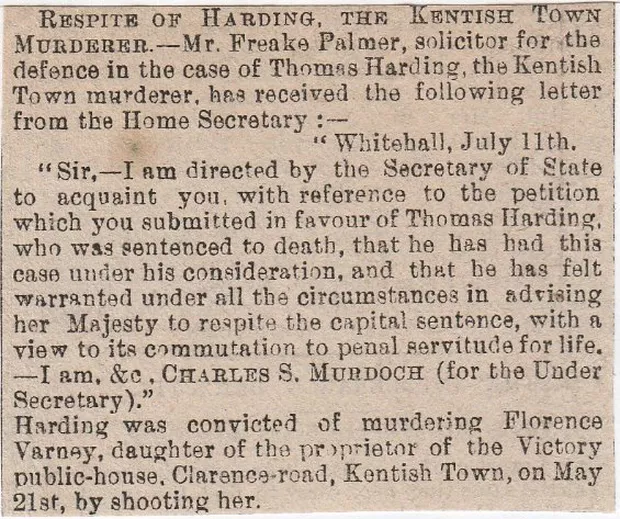
29/ Clare Market, September 1899
A woman named Beamish, wife of a Covent Garden porter, fell out of a second storey window at 3, Clare Market, Drury Lane. On her descent, to the ground, she was impaled on some railings, the ones with the pointed spikes, and they went through her legs. She stayed in that position until her neighbours came to her rescue, and she was rushed off to Charing Cross Hospital.
30/ Great Wild Street Murder, Drury Lane, March 1899
Great Wild Street is a little street that leads off Drury Lane and was the scene of the murder of a chap named Joseph Wootton. The deceased was in Stanhope Buildings in Great Wild Street when an argument broke out between him and another man. Wootton ended up being shoved out of the window and landed head-first on the pavement. A man, Michael Joseph Holland, was arrested and charged with the murder of Wootton, but he denies any knowledge of the incident. Police searched his room and found deceased’s hat in there, and it looked as though there had been an altercation between someone.
31/ Furnivalls Inn, (Holborn area), December 1889
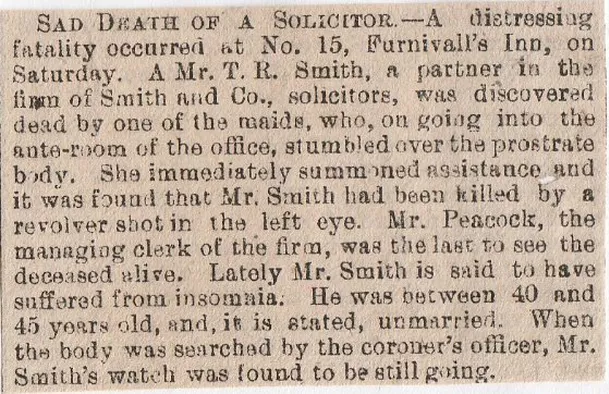
32/ Gospel Oak Station Suicide, February 1883
40-year-old Charles Farmer went to the Gospel Oak Station on the London and North-Western Railway and got a ticket for Broad Street. On the journey, the ticket-collector was doing the rounds, when he heard a painful groan coming from the toilets. He asked the occupant if they were all right, but got no answer, so he tried to gain entry, but the door was locked. They forced it open and found Farmer on the floor with an empty bottle of oil of vitriol. Farmer just garbled the words that he’d poisoned himself, then gave him a piece of paper.It read:- “C.Farmer,17 Roderick Road, Mansfield Road, Kentish Town.- Cannot hold out any longer. Mrs Payne will look after my wife. My love to all. Goodbye. Ask Mr Shepherd to forgive all. Tell him to look after my goods.” He was rushed to hospital in Hampstead Road but died an hour later. The post-mortem examination revealed that the deceased had died from sulphuric acid poisoning.
33/ St Pancras, Stuckley Place, October 1887
Bessie Smith aged 24, an artist’s model, was found with her throat slit in a house in Stuckley Place (that could be Stukeley) She was a single mother, liked a drink, and was not intellectually gifted. The wound was huge nearly taking the head clean off, but she had done it herself and death would have been instantaneous. A witness said he often helped her out when she was hard up, which was quite often, and she was depressed most of the time.
34/ Kentish Town Child Murder, November 1887
A man was in the school-grounds in Leighton Grove, when he discovered the trunk of a fully developed male child. Police were called to the scene and a search in the neighbouring grounds resulted in the legs, hands and feet were found. They were all skilfully carved from the body, and this is now a case of child murder.
35/ Drury Lane (Westminster/Camden) December 1885
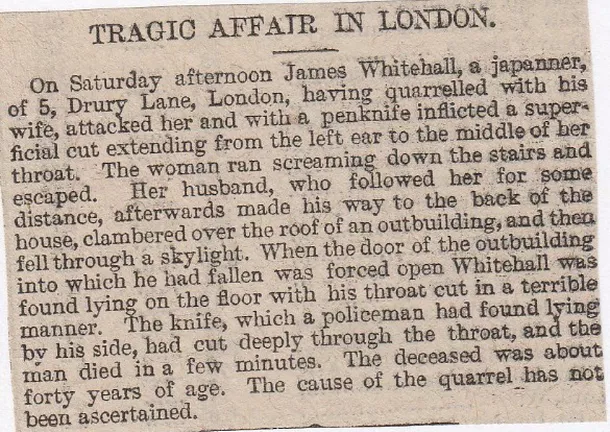
36/ High Holborn Suicide, July 1857
25-year-old Frances Thompson committed suicide at the Photographic Rooms, No 83, High Holborn, by running into the room and swallowing a mouthful of cyanide of potassium from a basin. When she had done it, she cried out “I have done it, Bob!”. Mr Winter, the owner of the rooms, said that deceased had lived with Bob some time and the two of them had several kids with each other. Arguments had come thick and fast recently as he found out that she had been robbing him, so he told her to get out. She ran upstairs, as he thought to pack her stuff and leave, but it was here that she drank the cyanide of potassium and killed herself. (Is 83 High Holborn still about?)
37/ Covent Garden Theatre Death, January 1882
While performing in front of four thousand poor children in the pantomime “Little Bo Peep”, Sydney Powell, aged seventy-two, who had worked at the Covent Garden Theatre for the last twenty years or so, keeled over and died while he was directing a lime-light onto an actress playing one of the flies. He was the oldest employee at the Theatre but he enjoyed good health, and always seemed to be in a jaunty mood. He was great-uncle to Walter Powell M.P. for Malmesbury, who died in a balloon crash some time ago.
38/ Anglo-Italian Club, Holborn, August 1890
At Clerkenwell Police Court on Monday, Ambali Tos, an Italian, was charged with stabbing James Sullivan at The Anglo-Italian Club, Holborn, that morning, after the complainant had trodden on a young woman’s toes while dancing and had apologised. The prisoner was committed for trial.
39/ George St, Hampstead Road, December 1904
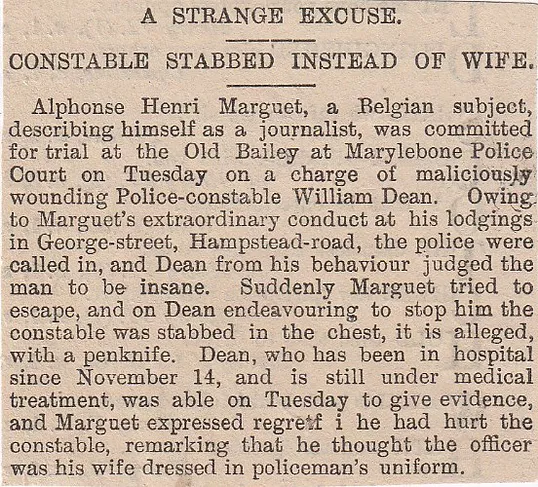
40/ Euston Square Station, (Children’s Bodies Found) January 1871
The discovery of the dead bodies of two children, found in a box at Euston Square Station, caused quite a stir in the neighbourhood. One was a boy and the other was a girl, they were nine months old, and twins. For the vast majority, we don’t understand why adults could inflict such injuries upon a helpless baby, and this is no different. They had their noses cut off, upper jaws injured, and several teeth knocked out. They were both suffocated to death to finally end their miserable little lives. Coroner thought it was an exceptional case and therefore the Home Office should offer a reward. (See Carlisle 1870)
41/ Kentish Town, August 1889
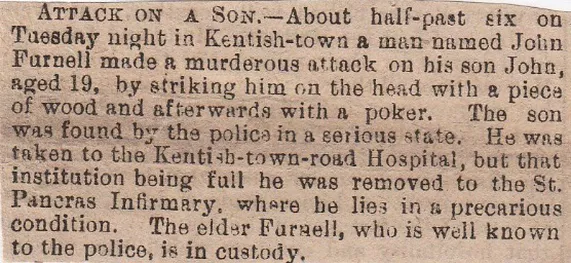
42/ Euston Station, August 1862 (Abandoned Baby)
A shocking act of human cruelty was discovered at Euston Station, of the London and North-Western Railway. A woman went into the W.C. near the waiting-room, when she came across a bonnet box. A policeman was summoned, and upon him opening the box it was found inside a month old baby boy. It seemed that he wouldn’t make it, as it appeared to have been poisoned but doctors did all they could, and miraculously it has survived and now he has been put in the care of the local Workhouse.
43/ Seven Dials, Covent Garden(Camden/Westminster) October 1883
One afternoon in Seven Dials, the funeral of the fishmonger who killed himself the other day, in the Seven Dials area, was taking place. A rumour was abound that the poor fellow had committed suicide because of the conduct of his wife, and this whipped up a strong feeling against her. A crowd had accumulated nearby and they were whooping and wailing, as the body drew nearer and anger began to spill over at the wife’s expense. She was unable to leave the house as the crowd became violent, and threats were hollered at her, and the hearse was waiting outside for a considerable time. The wife was eventually ushered out and the hearse made it’s way to the cemetery, but the mob followed and the scene became violent at the grave-side. Police managed to get the woman out in one piece and then the crowd dispersed.
44/ York Street, Covent Garden March 1868
Just after 11 o’clock on Tuesday morning in York Street, Covent Garden, James George Francis, aged 17, fell from the top floor of the building occupied by Messrs Bell & Daldy, publishers. He was a porter there and was shaking out the carpets on the roof-top, and when leaving it was usual to slide down an incline. Instead of doing this, Francis ran, and there is no railing near the guttering and he fell into the backyard. He was killed on the spot, and his father, who lives in Drury Lane, arrived at the scene, just as they were taking his son to the mortuary at St Paul’s in Covent Garden. The fall was around 40-50 feet.
45/ Torrington Square, (Mysterious Death) Bloomsbury, December 1885

46/ St Pancras Station Fatality, September 1885
After the arrival at St Pancras Station yesterday morning of the Midland mail train, the driver, Henry Saracen of Leicester, began to examine and oil the engine. While he was thus engaged he was struck by the gear of a passing postal van and severely injured. He was at once taken to hospital but died soon afterwards from internal injuries.
47/ Charlotte St, Fitzroy Square, June 1885
At 2-30 a.m., a fire occurred at 71, Charlotte St, Fitzroy Square, on the portion of the premises tenanted by Mr F.N.Miller. From an unknown cause, the front room on the ground floor caught fire but the flames were soon subdued. It was then found that Mr Miller had been burned to death.
48/ West Hampstead Station Suicide, March 1892
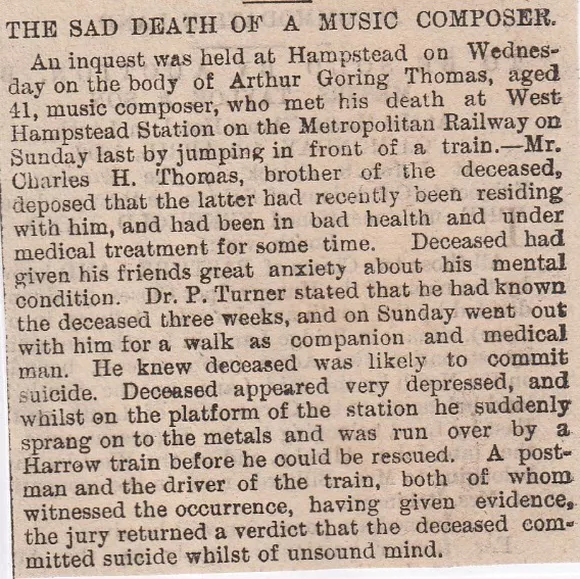
49/ Red Lion Street, Holborn September 1886
Frederick Goodman, aged 78, who resided at 8, Red Lion Passage, Red Lion Street, Holborn, killed himself under the following extraordinary circumstances. Goodman was a tin-plate worker and had been depressed for quite a while and relatives didn’t suspect his suicidal tendencies. He was discovered early one morning in his room, enveloped in flames, after having tied his legs together, then poured a can of petrol (benzoline) over himself, then self-immolating. The fire was extinguished, and he was rushed off to the Royal Free Hospital, and doctor’s examined him. He had severe burns to head, chest and the rest of his upper body, and these burns caused his death a few hours later from shock and exhaustion, not the burns themselves.
50/ Kings Cross Station, (Camden/Islington) July 1883 (Baby in a box)
An inquest was held on the discovery of the body of a baby found in a box in a store-room in King’s Cross Station on the Metropolitan Railway. Annie Howlett, a servant, originally from Thame in Oxfordshire, now living in Ealing, stated that in December of 1881 she ran away from home. She went to London with Fanny Lester and were met by Georgina, Fanny’s sister on their arrival, and she took them to Drury Lane. The day before they left Oxfordshire, Annie gave Fanny some pieces of clothing of hers to put in a box, which she did. They arrived in London on the 18th December, and Fanny Lester left the box at Portland Road Station cloak-room. The promise of calling for it the next day never materialized, and Howlett asked Lester several times to go and retrieve the box because she wanted the items of clothing out of it. Lester said she had no money to pay for it. The witness was shown the box at Kings Cross Road police station, and she recognised it as the one belonging to Lester. How the child got into the box, was nothing to do with her, she said. Howlett hadn’t seen Lester for a few months so what had occurred in those intervening months is a mystery. (Who’s was it?/Who was lying?)
51/ Kentish Town, April 1885 (Death from Starvation)
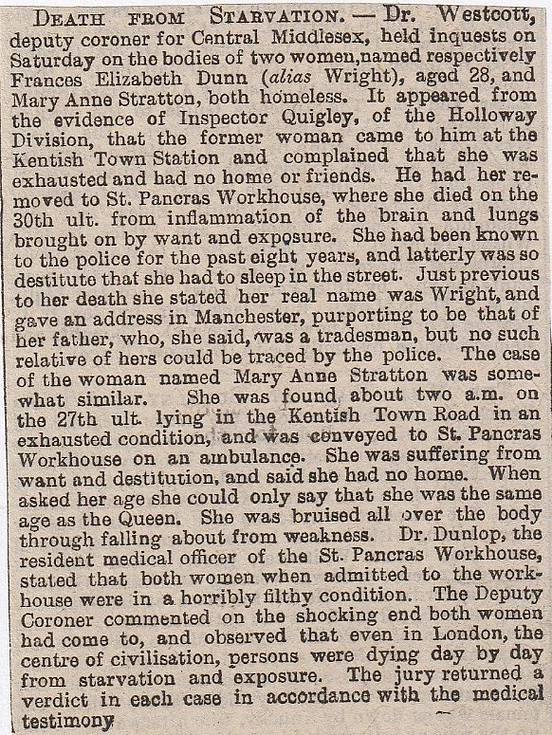
52/ Midland Grand Hotel, St Pancras, June 1893 (Suicide)
Mrs Weston Webb, who was staying at the Midland Grand Hotel, killed herself in a horrific manner. Weston Webb was one of a party of four or five people who were in London on a mini-break from the North of England. She had a nurse with her, due to her poor health, a couple of cousins, and another man and woman. They took it in turns to keep an eye on Weston Webb, and a cousin who was looking after her left her on her own for a couple of minutes. With amazing speed and dexterity for an ill person, she opened the window, climbed onto the balcony, then plunged headfirst onto the pavement, which is a drop of approximately 200 feet. There was quite a mess at the bottom as you can imagine, and the remains were scooped up and taken to the mortuary. This is now the St Pancras Renaissance Hotel, closed in 1935, then re-opened in 2004 as a hotel again.
53/ Thirteen Club, Holborn, April 1913
Southwark Central Library was given a collection of strange objects, given by R.W.Bowen, which are items from the “Thirteen Club”, which wasn’t around for very long, but it was formed to combat everyday superstitions. Broken mirror, a skull, and a salt-cellar in the shape of a coffin were used at the last dinner of the club, held at the Holborn Restaurant on January 13th,1894. It was held in Room 13, and had thirteen tables, with thirteen dinners at each table. All the knives were crossed, and salt was deliberately spilt, and, this I never knew, the waiters were all cross-eyed. Is that unlucky? A mirror was smashed at the feast, and on entering the room they had to walk under a large ladder. The club is now defunct. Other strange clubs were the “Suicide Club” in the USA, and the “Husband Murdering Club” in Hungary, which are listed here.
54/ Camden Road Murder, March 1885
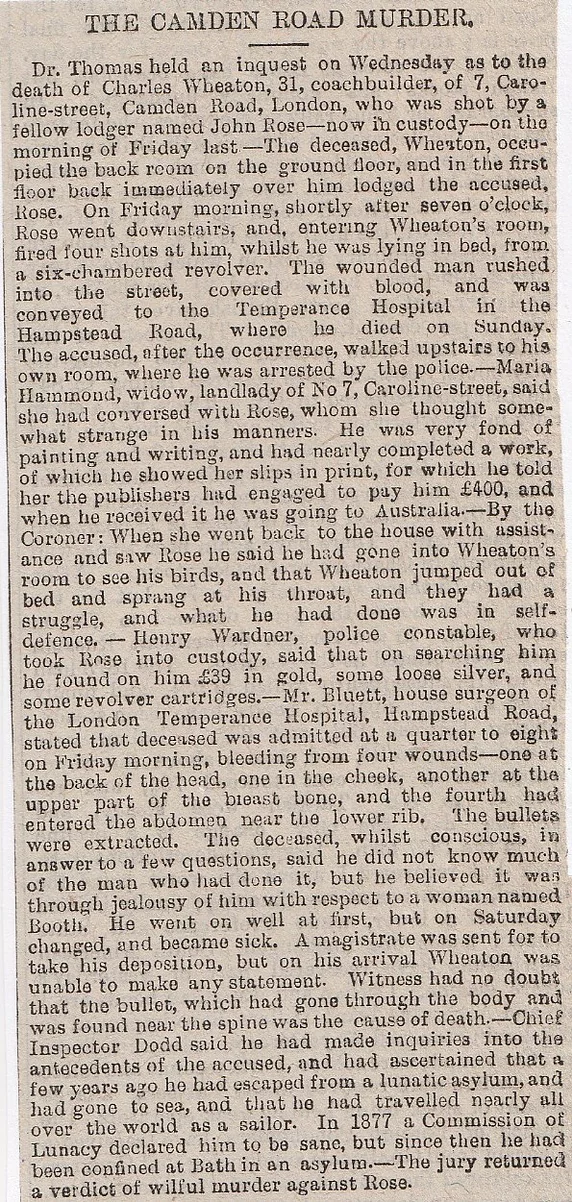
55/ Bernard Street, Russell Square August 1869
Just for a change in Victorian England, the story of a suicidal teenage domestic servant. This was 17-year-old Charlotte Matilda Hopkins, who was found dead in her room at 51 Bernard Street, Russell Square. Her mother came from Soho to identify the body of her daughter and she said that she seemed in good health several days ago, when she last saw her, and that she had a boyfriend called Tom, but everything was fine between them. Her mistress, Mrs Harriet Homan, said Charlotte had lived with her as a domestic servant, and stated that it was the norm to get her up between 6-7 in the morning, but on the morning of her death, there was obviously no reply. She walked in and discovered her dead in bed. Police came and found a teacup, lemon pieces, and a glass by the bed, and an oxalic acid paper in the fireplace. Also found was a letter dated July 29th, 1869, and addressed to her parents and siblings. It was as follows:-
“I now sit down with a sad and painful heart, but I hope that you will think as much of Tom as you did. I hope that my sisters will be better than I have been. When I am far away from home and in my grave, and all my bones are rotten, take this note and think of me. Let me not be forgotten. My Dearest Mother, I wish that you had kept me at home on Monday night, but that is God’s will. Goodbye, and God Bless you all. Will you give my love to all my friends and sisters, and to Mrs Capen-to them all; and to my dearest Tom, and to all of them; and accept the same, my dear mother and father? I love you more than I can tell, for you have been good and kind to me. I am dear mother, your child, Charlotte Matilda Hopkins.Goodbye.God Bless you all!”
The mention in the letter about keeping her on Monday night was about a letter she got from an emigration society for servants, and her agreement, if not adhered to, would result in three months jail, or £10 fine. Her mother told her to go back to work and not to worry, but it was this that preyed on her mind and caused her to commit suicide. A juror demanded to know the name of the society, and it was revealed as Servants Emigration Aid Society. It offered servants a chance to go abroad, the coroner said it was all right to offer women this opportunity but to do it with intimidation and threats made it illegal. A glass on the side had crystals in it, so they deduced that she had mixed the acid with port, or stout, and drunk it. It left crystals behind in the glass, so that was her cause of death.
56/ Torrington Square Stabbing, May 1885 (It’s in Bloomsbury)
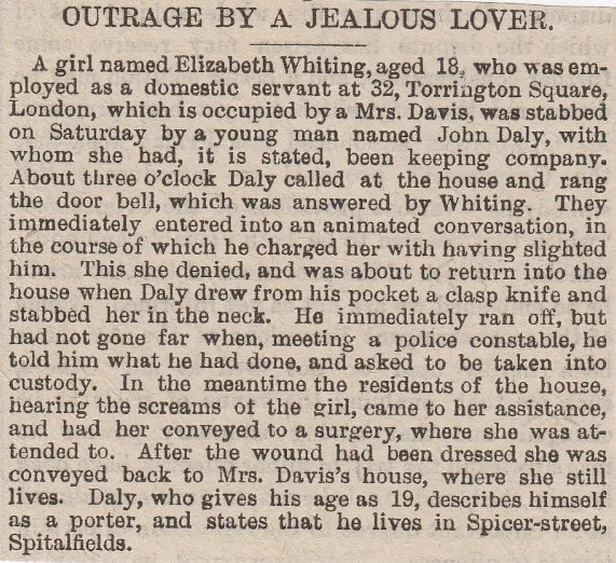
57/ Gray’s Inn Road, November 1876 (Child Neglect)
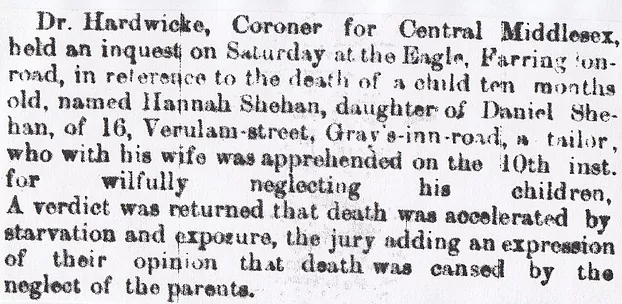
58/ Bloomsbury Child Murder/Suicide, January 1887
Alice Mallard, the wife of a cabman, living in Torrington Mews, Bloomsbury, on Tuesday, murdered her infant child and afterwards cut her own throat with a lancet. The dead bodies of the woman and child were discovered by the neighbours.
59/ Euston Square Station (Mysterious Death) July 1870.
60/ Kingsgate Street, Holborn (Burnt to Death) July 1870 There is a 53 Kingsgate Road in Holborn, but not the street. Is this the same? Reminds me of the road from 1970’s sitcom “Robin’s Nest”.
61/ Great College Street Fatality (could it be Royal College St?) September 1870 Goldington Crescent is still there, St Pancras Rd, now Pancras Rd. Next to St Pancras Hospital.
62/ Drummond Hotel Suicide August 1870 (Drummond Hotel, was at 54, Drummond St. Can’t find 54, long since gone/demolished?)
63/ College Terrace Suicide, Hampstead. July 1870.
64/ Camden Station Fatality, December 1870
65/ Euston Square Station Death, October 1870
An inquest was held at the College Arms Tavern, Camden Town, on the body of Israel Hoppett, aged fifty-nine, a gatekeeper in the employ of the London and North Western Railway Co. at the Euston Square Station. John Lee, engine driver, stated that on Saturday last while the deceased was standing by the side of the line and the St Alban’s train, having discharged its passengers, was being pushed out of the station at about 6 m.p.h., the buffer of a carriage struck him in the back, threw him on his face, and the wheels of eight carriages passed over his body. Dr Joseph Hill examined the corpse and the jury returned a verdict of “Deceased expired from injuries received at Euston Square Station, and the same arose from accidental causes”.
66/ St Pancras Fatality (Cambridge Street) December 1870
67/ Death From Destitution, Bloomsbury? October 1870
68/ Starved to Death at Gray’s Inn Rd, November 1870
69/ Albert Road Bridge Suicide, Camden. October 1870
70/ Vitriol Suicide (Brunswick Sq/Hunter St) October 1870
71/ Death of a Yeoman, June 1902. (Beaten up on Euston Road)
72/ Child Murder in King’s Cross, November 1903.
73/ Fatal Jump From Burning House, July 1903.
A fatal fire occurred at a lodging-house at St Pancras, on Monday morning. The inhabitants found their escape cut off by the flames, and several, too panic-stricken to wait for the fire escape, jumped from the windows. Daniel Whitehouse fell on the pavement with a terrible crash, and two other men were also injured. All three were taken to the hospital, where Whitehouse succumbed.
74/ Murder in Whitfield Street, Camden, December 1903. (Goodge Street Station behind it)
Saturday, January 9th, 1904
The inquest on the body of Dora Piernick, 29, the Polish Jewess, who was found dead with her throat cut at Whitfield Road, Tottenham Court Road, was opened on Monday. There is some mystery regarding the case and the evidence available points more to suicide. The suicide theory is supported by the absence of any signs of a struggle, and the deceased was so powerfully built and died so slowly that had she desired help she could have called out for a long time. The wound is also from left to right, as it would have been in the case of suicide. The inquiry was adjourned for a month for an analysis of the stomach.
75/ Accidental Poisoning, Kings Cross. January 1904.
76/ Botched Abortion Causes Death, Euston Road. March 1904.
77/ Cat-eating Lodger of Bloomsbury, March 1904
78/ Suicide of an Actress, Millman Street, Bloomsbury. September 1904
79/ Murder in Compton Street, Bloomsbury. March 1905
80/ German Baron’s Suicide in Actress’s Boudoir, Russell Square, Bloomsbury.
81/ Botched Abortion Surgeon on a Charge of Murder, Kentish Town. November 1906
December 13th, 1906.
Arthur Raynor, aged fifty-seven, physician, was found guilty of the manslaughter of Anne Lilian Martin, of Maldon Road, Kentish Town. The allegation against the prisoner, who had a practice in High Road, Kilburn, was that he performed an illegal operation on the deceased. He had been a confirmed alcoholic and had at one time kept his carriage and a pair of servants in North London, but had now sunk to rock bottom. One strange fact after all this happened, was the fact that the husband of the deceased had mysteriously vanished.
82/ Woman Poisoned at Rochester Square, December 24th, 1906. ( Rochester Square, near Camden Road Station)
15th, January 1907.
The inquest was concluded today on the body of Mrs Benbow, a wealthy Camden Town lady, who died on the 16th of December, 1906. In consequence of certain rumours of poisoning, the coroner, it will be remembered, stopped the funeral and ordered an autopsy. No trace of poison was found. It was also alleged that the deceased’s nephew’s forced liquor upon her. This was not proved, and the jury found that death was from syncope, due to her drinking. Syncope is a temporary loss of consciousness by a drop in blood pressure.
83/ Devil’s Island Fugitive Shot in Russell Square. June 1907. (Edward Guerin)
84/ Camden Town Murder. October 26th, 1907 (Emily Dimmock murdered by Arthur Wood)
Saturday, 21st December 1907. (The Verdict)
The trial of Robert Wood for the murder of Emily Dimmock concluded at the Old Bailey on Wednesday. Mr Justice Grantham, in summing up, said it was the most remarkable case within his experience. The jury, after an absence of fifteen minutes, found the prisoner “Not Guilty”, and he was discharged. The result was received in court with cheer after cheer, and outside there were extraordinary scenes of enthusiasm.
85/ Child Manslaughter/ Child Cruelty, Camden. November 1880 (The border of Camden/Westminster runs down the Broad Walk in Regent’s Park.)
86/ Death on the Railway, Kentish Town/Haverstock Hill. November 1880
An inquest was held at St Pancras Coroner’s Court as to the death of George Brown, aged twenty-four years, residing in Huntley Street, a number taker in the employment of the Midland Railway Company, at their Cattle Station, Kentish Town. On Saturday evening the deceased was walking on the line between Kentish Town and Haverstock Hill Station when a light engine came up and ran him over. He was so severely injured that he died in a few minutes. Mr Earp, the London district superintendent of the Midland Railway, said deceased was a most careful man, and had recently been promoted to be a number taker on that account. The jury returned a verdict of “Accidental death”.
